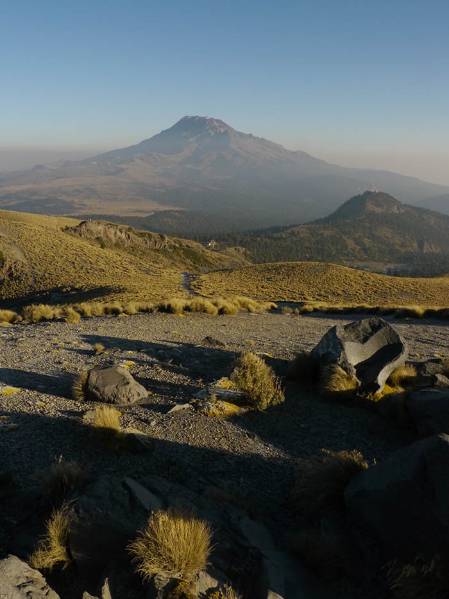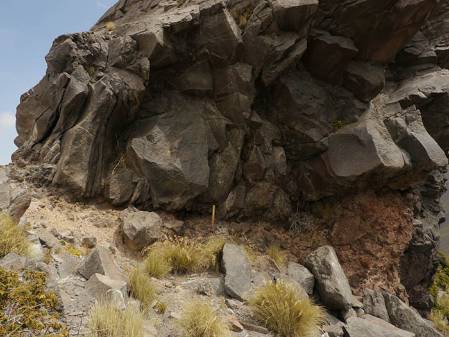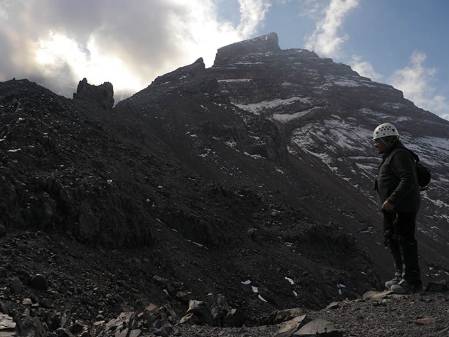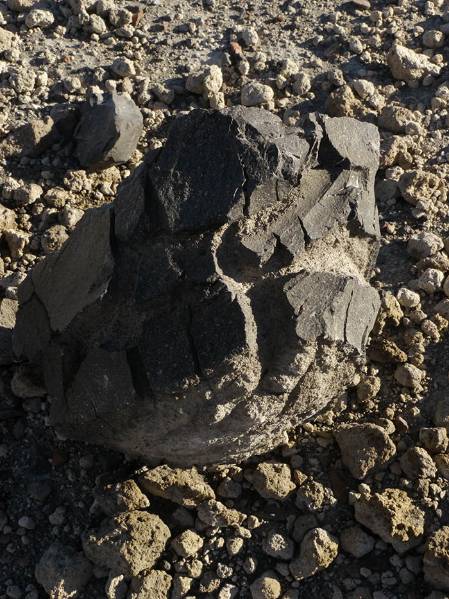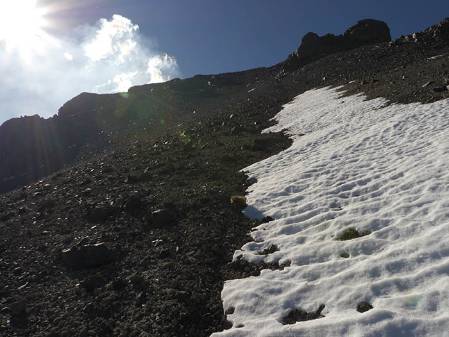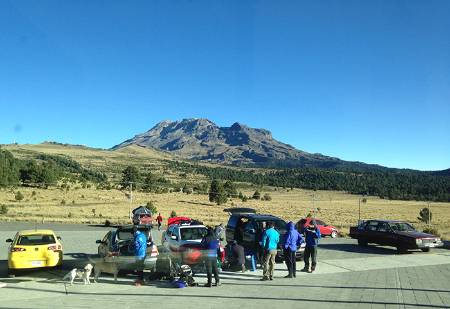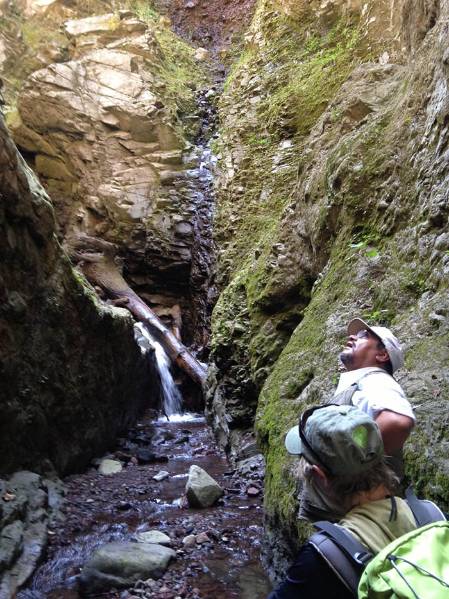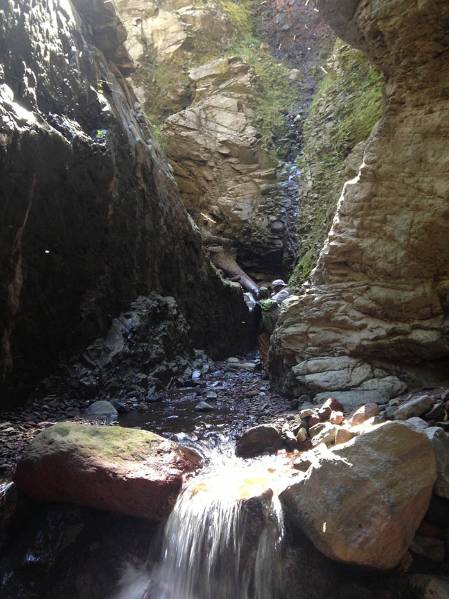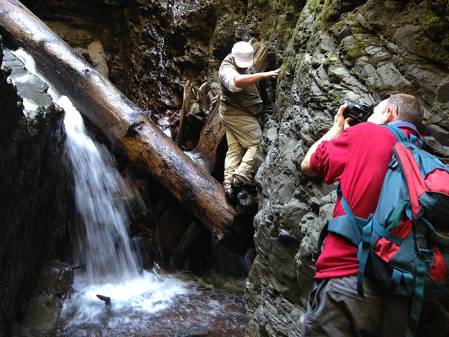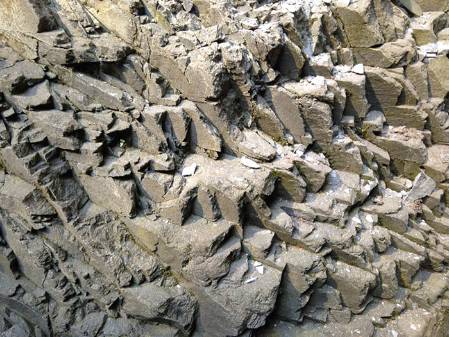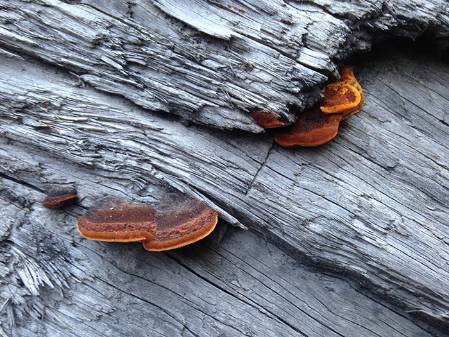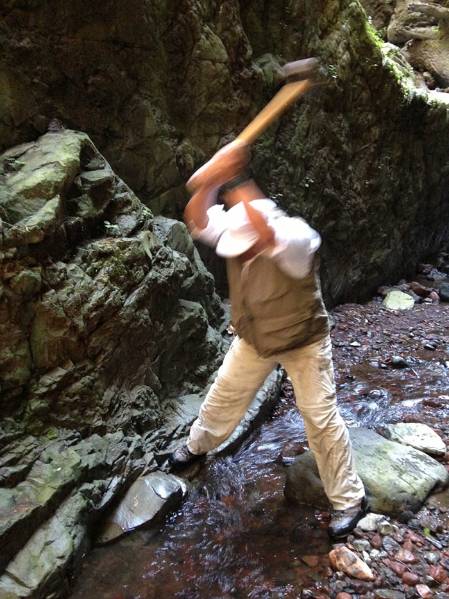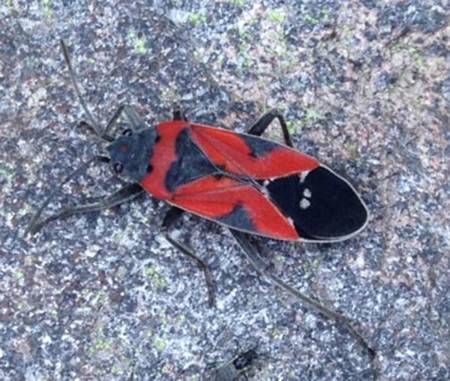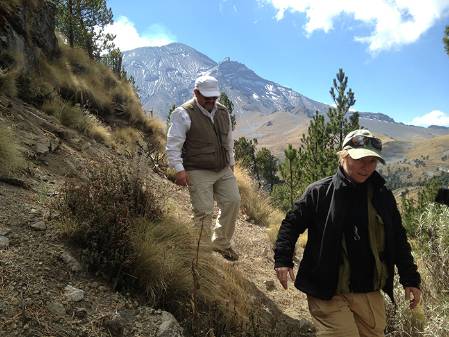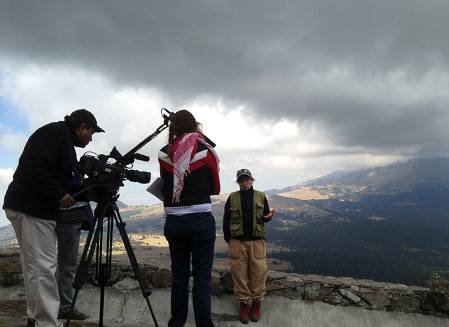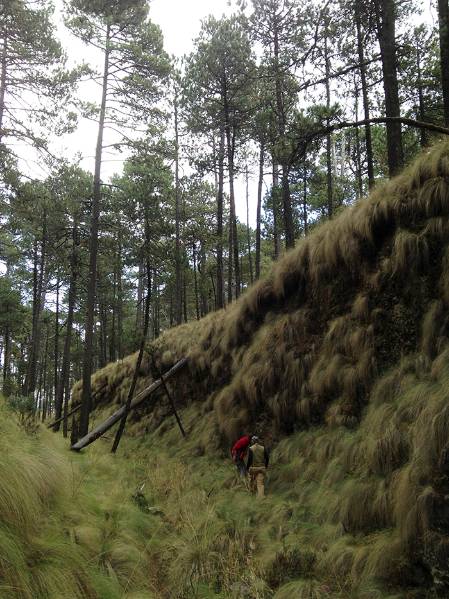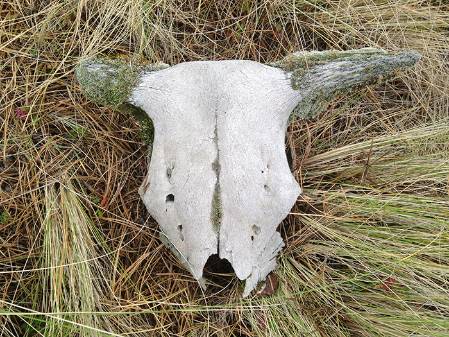Day five and we see a split in the team. The public engagement crew are town-bound due to our scientists traversing dangerous terrain at heights they've never been to before. I see the logic but I miss the buzz of the hike and reporting back first-hand. We travel as far as Tlamacas wth them at 06:00, me in the jeep asking them questions from UK students that are being relayed to me via phone, and all the while I'm eating a cheese and chilli sandwich. We're all tired but Dave and Chiara's day will push this exhaustion to its limit.
Still, it's vital to record their day for your good selves so I instruct Dave to take many photos, which you'll discover he was rather good at.
Popo, you never take a bad picture.
Rocky V: The return of the rugged outcrop. Actually, kinda like Stallone's face these days.
Chiara, Dave and Hugo cross a steep section of rocks roughly 30cm x 2m across, zig-zagging all the way. This in itself is tough going, those lungs in constant need of oxygen. But they're faced with an even steeper incline of pumice and loose ash after that and Dave gently laughs at the prospect. Slipping their way up, they are rewarded with reaching the snowline. A small patch of what once covered Popo to a greater degree, only to be reduced dramatically by the change in climate.
I'm fairly convinced this isn't a water stop. Hugo only stops to collect rocks.
The altitude sickness has lost it's bite for now and both Dave and Chiara are doing well. At least Dave can see straight away when he gazes up without the second or two delay he's been experiencing. Through his renewed vision, he spots a bread-crust bomb and as he photographs they hear a muffled, loud BOOM! The first explosion from Popo and I'm not there [shakes fist at sky]... A plume of gas drifts over the ridge and Dave remembers this isn't a mountain, this is an active volcano. And he's close enough to the crater to feel fear for the first time since being here.
The bread-crust bomb. Explain what it is or it'll break granny's teeth.
Meanwhile, I'd arranged to visit a local middle school in nearby San Pedro Nexapa to find out how the kids feel about living next door to Popocatepetl. The generous Gabriela and Gisela from the national park office had made this possible and as we turn into the gates I thank them. A sea of curious faces turn our way and I know from how they react we are in for a warm and funny visit.
Elsa, Marianna and Ana Paola had been chosen to speak with us and after shy introductions and a briefing that hopefully set them at ease, we set up camera. I didn't know what to expect as sometimes kids can be ambivalent to such real fears but the girls all showed it. They were more than aware from family members, the past dangers of Popo and, although very friendly, they were solemn on the subject. Marianna was particularly eloquent and agreed to appear with us on the live-link to the Museum's Attenborough Studio at 14:30 on Saturday (so check back with this blog as we hope that a recording of the event will be uploaded soon after).
Back to Popo and our scientists continue their climb ... the pumice under foot is 'Like standing on marbles' says Dave. Without poles? 'Nearly impossible.'
Two more BOOMS makes eight in the trek so far. Chiara, Dave and Hugo reach as far as they are going to climb today - 4,630m - where they'll take their first sample. They can see the stratification (arranging of layers) of the lava flows as they dip down into the valley.
Look at the strat on that.
The descent begins, back down to the snowline and Dave describes his footing as 'surfing the scree.' Much easier to slide down keeping the body stable than to scramble up it as he did earlier. He's keen to meet Chiara who's a little way off and make their way to the jeep after a 'cracking day.' Three or four more BOOMS in quick succession. Popo's really picking up the pace.
They descend further to 4,215m and feel the chill as the clouds descend. At an outcrop, they discover something new. A dark rock with really nice pink and white crystals of feldspar. Quite big crystals. They'd describe this as porphyritic and are both 'anxiously excited to find out why this rock is here and why it's different.'
The team made it back to base, safe and sound, despiite the frequent booms and rumbles that Popo made during their trek. Lee and I met them for dinner after a brilliantly guided visit by Gabriela to The Hacienda de Panoaya; home to a zoo, the international museum of the volcanoes, and a museum honoring Sor Juana Ines de la Cruz (Mexican nun and writer), who lived here during her childhood. Lee finished our visit in style with a post-lunch zipwire, crying out the word for 'mud' in Spanish to impress Gabriela with his learning.



